Posted by Marcus Hom on 2021 Nov 15th
Scope Levels: Take your shooting to the next LEVEL
Wind altering the trajectory of a bullet is a common reason shooters miss their target at medium to long-range. Another reason shooters miss is a variable that often looks like the wind but is, in fact, cant. Cant is when your scope is not level to the ground, which affects trajectory causing rounds to impact low and left or low and right. Cant can be mitigated by an anti-cant device like a level attached to your rifle or riflescope.
When we are on a nice flat range with a level horizon, cant is minimal due to our inner ear and easy-to-read terrain markers; however, when you are halfway up a mountain and have a target in your crosshairs, level may be hard to distinguish.
Question: In which of these photos is the reticle level?
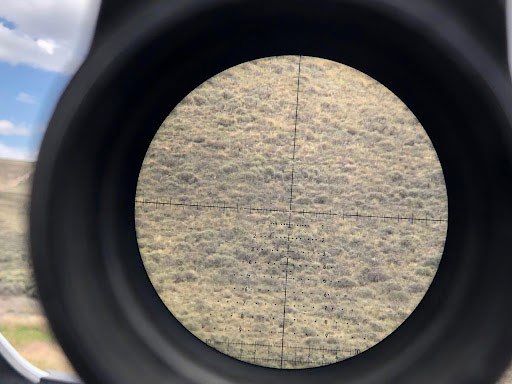
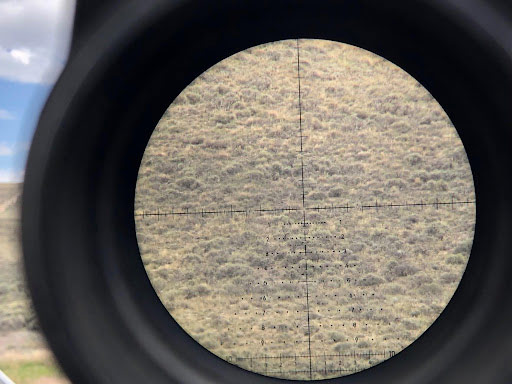
Answer: Did you say neither? Actually, it is both. It is the same photo, just tilted in either direction in the post-editing. Here is an image of the rifle. Not the electronic anti-cant device/level.
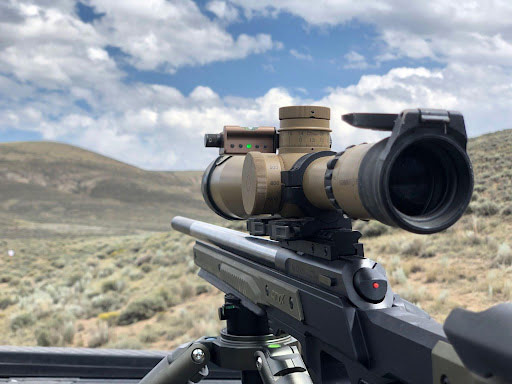
I know that is a cheap trick, especially since you weren't there in person. You may be saying my brain and vestibular senses would have told me what level was. That may well be true, but every system has points of failure, more on this in our final thoughts.
DOWN THE RABBIT HOLE: HOW BAD IS CANT GOING TO MESS ME UP?
At this point in your long-range shooting journey, you probably already understand bullets travel in a shallow arc, not a straight line like a laser beam. This is to correct for the effects of gravity. The further the shot, the higher the maximum ordinate of the bullet's arc. If that arc is tipped a little to the side instead of straight up and down, your bullet will travel off to that side. Is this the reason you are missing? That depends. How much cant do you have, and how much elevation is required to reach the target you are shooting at? Here is where things get a little "mathy." The amount of cant angle is expressed in degrees of angle. Zero degrees would be with your vertical stadia perfectly up and down. 2deg or -2deg would look like the photo below.(Photo from LAPUA Ballistic App)
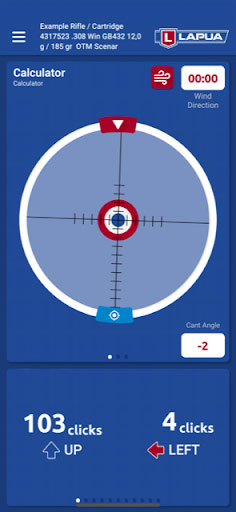
From what I have gathered, folks way more intelligent than myself still don't agree on all the nuances of the formula for calculating the amount of horizontal and vertical displacement due to cant. Still, the long and the short of it will impact whichever side you are canted and slightly low. Here is a sample formula from Gustavo Ruis of Patagonia Ballistics.
X(R)=H(R)*sin(cant) and Y(R)=H(R)*cos(cant)-DROP(R) where H(R) is height of bore line with respect to sight line (as a function of range R)
If that all looks like Greek to you, don't worry. You need to understand that we compensate for the bullet drop caused by gravity with our scope (either dialing up or holding higher.) This compensation is done in the vertical direction, just like wind holds are accounted for in the horizontal. The further the target, the more we have to compensate for gravity and the larger our arc of bullet flight. When we are canted, we rob some of that vertical compensation and turn it into the unintended horizontal movement toward whichever way the topside of our reticle is tilted. The effects are amplified when there is more cant or at longer distances.
PRACTICAL TESTING
Instead of trying to teach a trigonometry class when my education stopped at college-level algebra, let's look at some real-world test data.
Test Protocol: I shot a five-shot "control" group, then five shots canted 10° and five more rounds at -10°. To ensure my 10° of cant would be 10°, I drew lines on my target using a protractor on each side of the vertical line. I also ensured the target was hung level using a plumb bob (more reliable than a 4-foot level). I chose to use a 22lr for the test for a couple of reasons 1. Due to the slow muzzle velocity, I would have a more dramatic bullet arc at close range, allowing me to see my target still well while simulating the cant effects most shooters would see with their centerfire rifles at the three or four 400-yard range. 2. I had ammo for it that didn't cost two bucks per trigger pull.
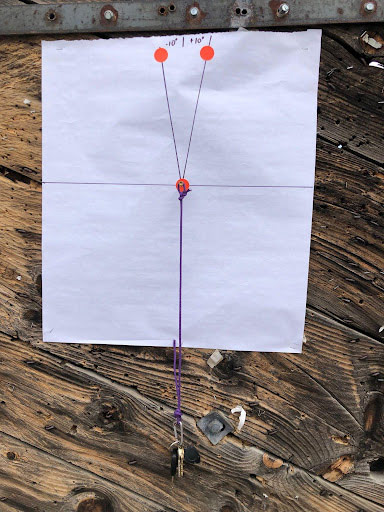
Equipment Used:
- The equipment used for this test was:
- CZ 457 w/Lothar Walther barrel and AB suppressors "Little Bird."
- ORYX chassis
- Schmidt and Bender PM2 PSR in a BOBRO compact dual lever low mount
- Send iT electronic bubble level
- Field Optics Research ground tripod (Extremely stable shooting platform which allowed me to control cant precisely.)
- Tactical Tailor Rear bag
- Eley Biathlon ammo (The Rifle/Barrel prefers SK Match, but this was the next best thing I had on hand)
Here are the results:
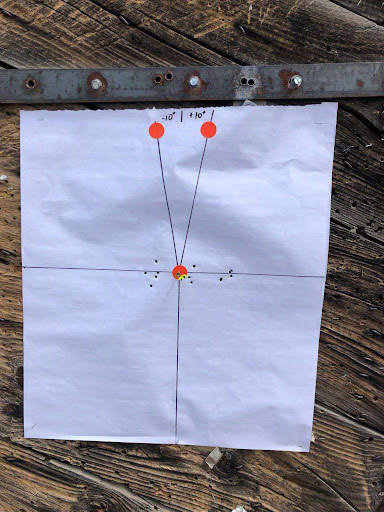
Interpreting the results
The center's control group shows the effects of a left to right wind (About a half-inch of left offset). Also, the groups aren't quite as tight as I would have liked, but considering it was a 22lr, they will work fine, especially since we are just looking at the statistical center of the group. As you can see, the offset due to can is about 2.5" in either direction, which is pretty close to what the Lapua Ballistics App predicted.
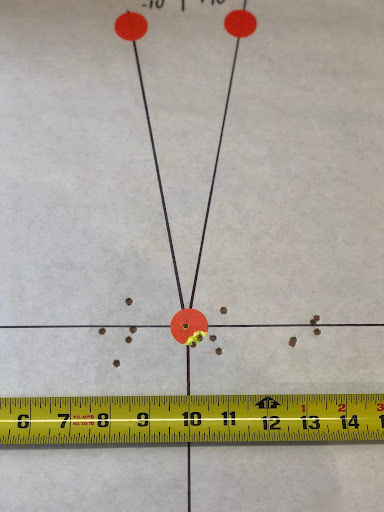
It is an indisputable fact that scope cant affect the point of impact. What we choose to do with this knowledge varies from shooter to shooter. For those who choose to do more than "eyeball it," numerous anti-cant devices can be mounted to the scope, on the scope rings, in the chassis or stock, or even inside the scope itself. Personally, I like ones I can set to level (adjust) because I often run my scope with a very slight cant relative to the rifle, which compliments my body's morphology, and is ok as long as my scope is level with the world. I have been running the Send iT level because it is easy to see with my non-shooting eye (co-witness) and is incredibly accurate.
Additionally, I like the fact that the sensitivity is adjustable. I run it at the highest sensitivity setting to get the most benefit while taking stable long-range shots. If I need a quick reference, I will leave the lights off and simply look at the bubble.
As important as having the right tool is using it correctly. YOU MUST ENSURE YOUR LEVEL IS LEVEL TO YOUR BULLETS TRAJECTORY. To do this, you must first decide if you are primarily going to dial or hold for elevation. We must choose one because the reticle does not always line up with the travel of the erector assembly (the thing that holds the lenses that make the reticle move). If we are going to hold for elevation, we can just put the reticle on a plumb line and set the level. If we are going to dial elevation, we should go one step further and shoot a "tall target test" and ensure our shots are tracking straight up and not off to either side.
FINAL THOUGHTS
As I mentioned earlier, some folks simply rely on their eye and vestibular sense. This will usually work well, especially in conventional positions like prone, on flat ranges. However, as with every system, there are points of failure. Ear infections or damage, optical illusions, and awkward positions can all introduce unintended cant into the rifle system. It is because of these circumstances I choose to run a level. Call me a belt and suspenders type of guy, but I like having the redundancy. Some ballistic calculators can accurately correct the effects of rifle cant, but as they say, "garbage in garbage out." It is tough to feed an accurate number for degrees of cant into a solver, so I prefer to run an anti-cant device and keep that number set at zero. Whether you are trying to make hits at a mile or shave off 10ths of an inch at a hundred yards, controlling rifle cant is a key.
ABOUT THE AUTHOR
Marcus Hom is a shooter through and through. Born to a pistol-packing mama, he has spent his entire life around firearms. Marcus spent much of his adulthood guiding hunts in Alaska, teaching CCW and precision rifle courses, competing in national level matches, conducting research and development, and gunsmithing. Marcus is a former Federal Law Enforcement Officer.

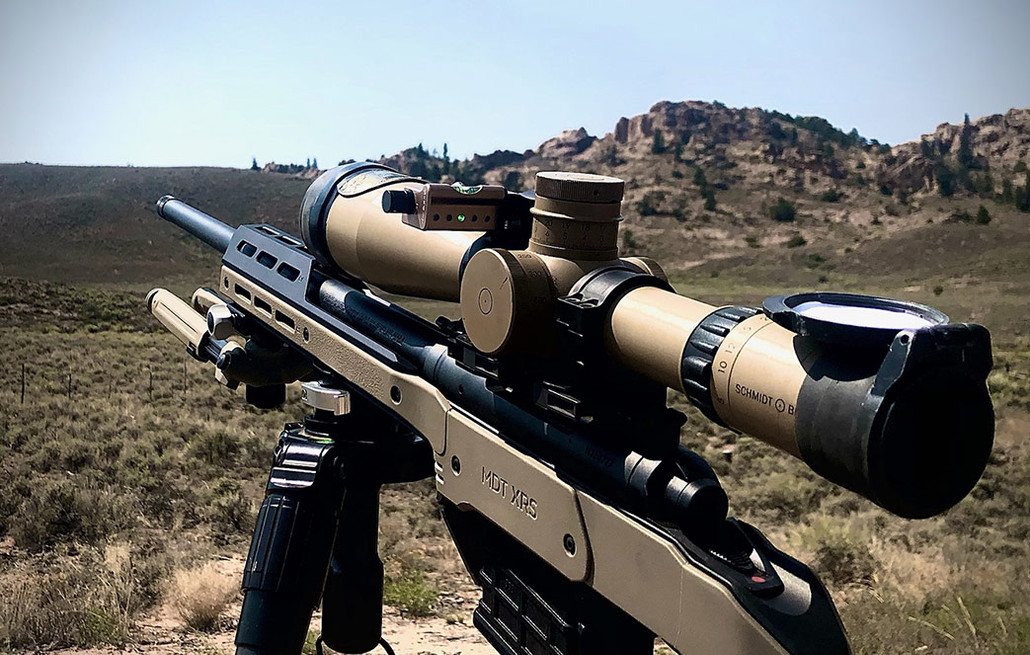
 CAD
CAD
 Euro
Euro
